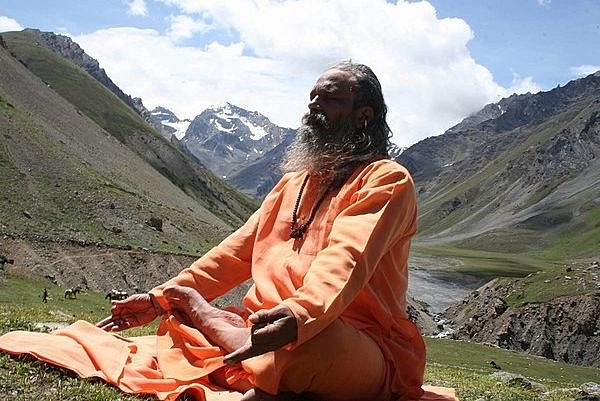Insta
American Journal Credits Ancient Indians With Deep Understanding Of The ‘Life Principle’; Lauds Yogic Science

Representative Image (Wwwnath/Wikimedia Commons)
Breathing, being a central part of life, is so essential that our ancestors recognised its importance and devised methods to control it to improve well being. These methods of controlled breathing are still being used around the world. Many breathing exercises used today have got their inspiration from Yoga and meditation. Centuries ago, practitioners of Pranayama had put forward the benefits of controlled respiration, says Scientific American in its recent journal.
Around first millennium BCE, both Hinduism and Tao religion of China emphasised on a “vital principle” that flows through the body, a kind of energy or internal breath. They perceived respiration as one of the manifestations of that internal energy. Hindus call it Prana, which is key to the Yogic concept, while Chinese refers to it as qi.
The concept of breath modulation to influence health and mind, too, appeared centuries ago. Pranayama Yoga was the first doctrine to build a theory around controlled breathing. It holds that respiratory control was a way to increase longevity, the journal reported in its findings.
Research into basic physiology as well as effects of applying breath-control methods lends acceptance to the importance of monitoring inhalations and exhalations.
Problems like anxiety derived from respiratory difficulties or other causes can be eased by breathing techniques derived from traditional eastern practices. Exercises like “follow your breath” and combining your thoughts with breathing, comes from Yoga and other eastern techniques. The attentional focus described in these techniques help in easing stress and negative emotions, says the report.
Introducing ElectionsHQ + 50 Ground Reports Project
The 2024 elections might seem easy to guess, but there are some important questions that shouldn't be missed.
Do freebies still sway voters? Do people prioritise infrastructure when voting? How will Punjab vote?
The answers to these questions provide great insights into where we, as a country, are headed in the years to come.
Swarajya is starting a project with an aim to do 50 solid ground stories and a smart commentary service on WhatsApp, a one-of-a-kind. We'd love your support during this election season.
Click below to contribute.
Latest